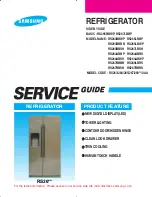
4–11
T-340
b. When the return air temperature decreases to a predetermined tolerance above set point, the green IN-
RANGE light is illuminated.
c. When the return air temperature decreases to 0.2°C (0.4°F) below set point, contacts TC, TS and TN are
opened to de-energize the compressor, economizer solenoid valve and condenser fan motor. The white
COOL light is also de-energized. The EEV will close.
d. The evaporator fan motors continue to run in low speed to circulate air throughout the container. The green
IN-RANGE light remains illuminated as long as the return air is within tolerance of set point.
e. If return air temperature drops to 10°C (18°F) or more below set point, the evaporator fans increase to high
speed.
f. When the return air temperature increases to 0.2°C (0.4°F) above set point and three minutes have
elapsed, the EEV opens and contacts TC, TS and TN close to restart the compressor, open the ESV and
restart the condenser fan motor. The white COOL is illuminated.
Figure 4.9 Frozen Mode
NOTE
The EEV and DUV are independently operated by the microprocessor. Complete schematics and legends
are located in
.
4.3.20
Defrost
Defrost is initiated to remove ice buildup from the evaporator coil which can obstruct air flow and reduce the cooling
capacity of the unit. The defrost cycle may consist of up to three distinct operations. The first is de-icing of the coil, the
second is defrost due to a probe check cycle, and the third is a snap freeze.
Defrosting the coil consists of removing power to the cooling components (compressor, evaporator fans, and con
-
denser fan), closing the EEV, and turning on the heaters, which are located below the evaporator coil. During nor
-
mal operation, de- icing will continue until temperatures indicate that the ice on the coil has been removed, proper
air flow has been restored, and the unit is ready to control temperature efficiently.
After de-icing, and depending on unit configuration, a Defrost / Probe Check and/or Snap Freeze may occur:
During Defrost / Probe Check, the evaporator fans are allowed to run for a period of time after de-icing in
order to validate the accuracy of the temperature sensors, and confirm that defrost was executed properly.
See
, Probe Diagnostics for additional information.
Defrost / Snap Freeze allows the system to cool for a period of time after de-icing, with the evaporator fans
turned off. This allows for the removal of latent de-icing heat from the evaporator coils, and freezes any
remaining moisture that might otherwise be blown into the container.
24 VOLT POWER
ENERGIZED
DE-ENERGIZED
TN
ST
F
HPS
CH
IP-CM
TC
CF
TE
IP-EM1
EF
IP-EM2
HTT
TH
HR
ESV
TS
TV
EF
ES
Содержание Transicold 69NT40-561-001
Страница 2: ......
Страница 4: ......
Страница 14: ......
Страница 22: ......
Страница 36: ......
Страница 92: ......
Страница 159: ...7 47 T 340...
Страница 163: ...8 3 T 340 Figure 8 2 Schematic Diagram for Standard Unit Configuration Based on Drawing 62 11271 Rev A...
Страница 169: ...8 9 T 340 Figure 8 8 Schematic and Diagram for Lower Vent Position Sensor VPS Option...
Страница 170: ...T 340 8 10 Figure 8 9 Unit Wiring Diagram for Standard Unit Configuration With 3 Phase Condenser Fan Motors...
Страница 172: ...T 340 8 12 Figure 8 10 Unit Wiring Diagram for Single Phase Condenser Fan Motor and Optional Heater...
Страница 173: ...8 13 T 340 Unit Wiring Diagram for Single Phase Condenser Fan Motor and Optional Heater Based on Drawing 62 66721...
Страница 174: ...T 340 8 14 Figure 8 11 Unit Wiring Diagram for Configuration With eAutoFresh and Emergency Bypass Options...
Страница 176: ......
Страница 180: ......
Страница 181: ......
















































